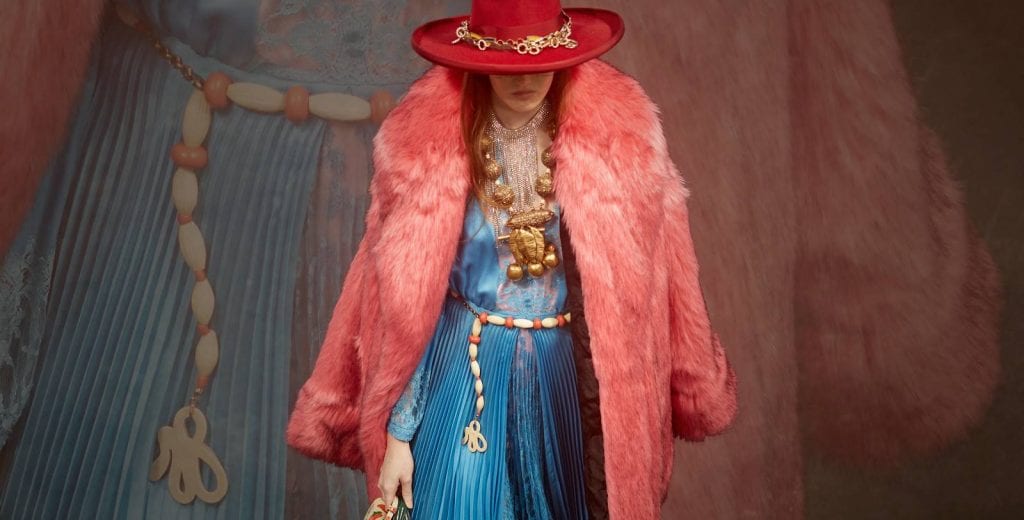Beginning in 2017 (en masse) and continuing full steam in 2018, many fashion brands and retailers announced one by one that they would stop using animal fur in their collections and in the case of retailers, offering up fur products for sale. Gucci creative director Alessandro Michele, for instance, swore off fur last year, saying that use of the textile is “not modern.” Donatella Versace revealed this spring that her brand will distance itself from fur, stating, “I don’t want to kill animals to make fashion.” And as recently as this month, Chanel announced that it would join the likes of Net-a-Porter, FarFetch, Armani, Burberry, Calvin Klein, Givenchy, and Bottega Veneta, among others, in discontinuing its use of fur.
The fashion industry, the media, and PETA – which has been focusing its efforts on fashion brands with increasing vigor in recent years – have met such decisions with widespread approval and glowing headlines, praising the fashion industry development as a momentous step forward in the animal rights movement. However, with the push against fur has come an increasingly more pronounced position from the opposition, including those that have pointed to the problems associated with the alternative: the faux fur that brands like Givenchy, Gucci, Versace, and Michael Kors have put on their runways in lieu of real fur is not without issues either.
In mid-December 2018, Mary Creagh, a Member of Parliament of the United Kingdom, spoke out about the ugly downsides of the fossil fuel-created synthetic fibers that go into fashion’s flashy fur replacements and that are contributing to greenhouse gas emissions. Speaking to The Independent, Creagh highlighted several of the main points put forth by pro-fur parties, stating that in addition to the fact that faux fur garments “are made entirely out of artificial fibers like polyester that are a byproduct of the petroleum industry,” fake fur garments are also “almost impossible to recycle” and often end up landfills as a result of a fast fashion culture.
And MP Creagh is not alone in voicing the nuances of the fight over fur. Veteran fashion industry commentator BryanBoy has also been a leading voice when it comes to pointing out the potential downsides of replacing fur with oil-based alternatives. He regularly uses his various social media platforms to highlight that faux fur is typically made from synthetic polymeric fibers, such as acrylic, modacrylic, and/or polyester, all of which are essentially forms of plastic that are harmful to the environment both in terms of initial manufacturing, but also in later stages, including when these garments are washed. (Clothing that contains synthetic fibers such as polyester and nylon contributes to micro-plastic pollution, which can end up polluting water sources.)
Sustainability-centric journalist Alden Wicker agrees, telling CR Fashion Book that in addition to questionable credentials on the sustainability front, there is likely more to the anti-fur effort by brands than meets the eye. “Fashion companies can save a lot of money and increase their profit margins by making faux fur coats and selling them at a similar price to real fur coats,” she says.” The motivation is money, not altruism.” (As we noted last summer, there are, in fact, business benefits to swearing off fur).
These voices are joined, of course, by lobbyists, such as Mark Oaten, CEO of the International Fur Federation, who has voiced concern about “how it is possible for a chemical-based product, such as faux fur, to be more sustainable than a natural-based product.” He notes, “Some of the fake fur is saying that it is being developed using recycled plastic, and that is great, however, it is still plastic.” While the trajectory for faux fur is only just coming into focus in a meaningful way, one thing that is abundantly clear is that more nuance is coming into the conversation about the merits of using – or swearing off – fur. What will be interesting to see is whether this is something that fashion sticks to in the long run.














